Why are there so many spiders in the fall?
It's the spiders' world and we're just living in it...
I know I wrote last week that insects are disappearing at an alarming rate, but you’ve probably noticed that as the weather cools towards fall and winter, the spiders seem to proliferate. Suddenly there are spiders in every corner of my baseboards and walking our trails in the early morning means needing to carry a swiping stick. Here is Andrew’s invention to keep me from getting a face full of spiders when riding our home trails:
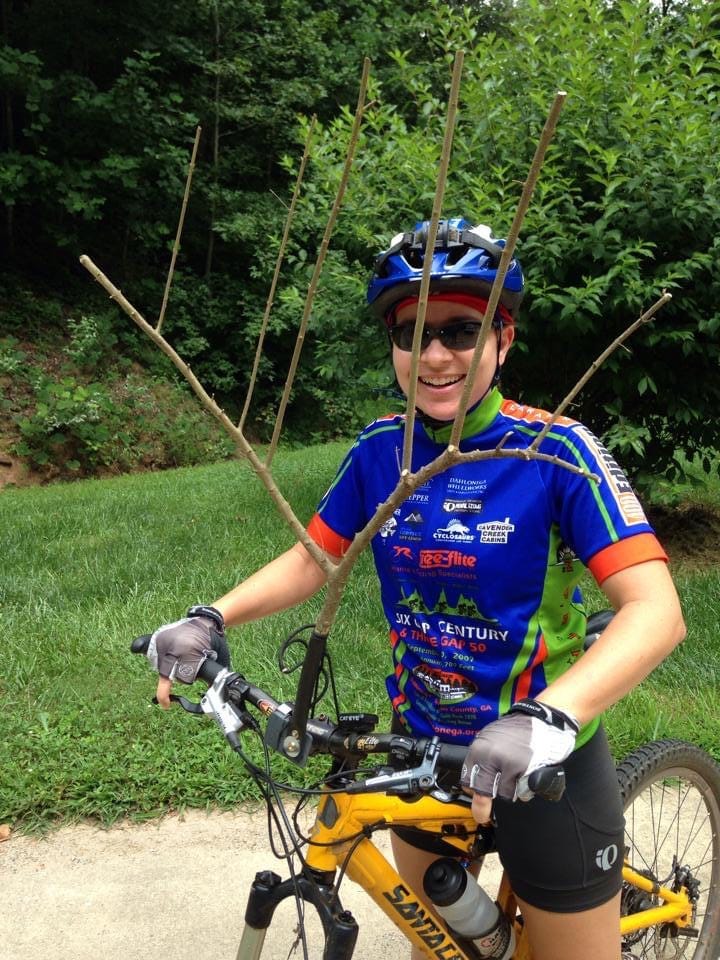
Of course, it’s gotten worse since invasive Joro spiders have arrived here from Japan. They build beautiful, golden webs that are strong enough to occasionally snag hummingbirds (though the spiders don’t kill the birds) and at this point in the year they’ve grown to hand-sized status (both the spiders and the hummingbirds). My friend Jeremy posted this photo of a collection of Joros from a recent bike ride near Canton, Georgia:
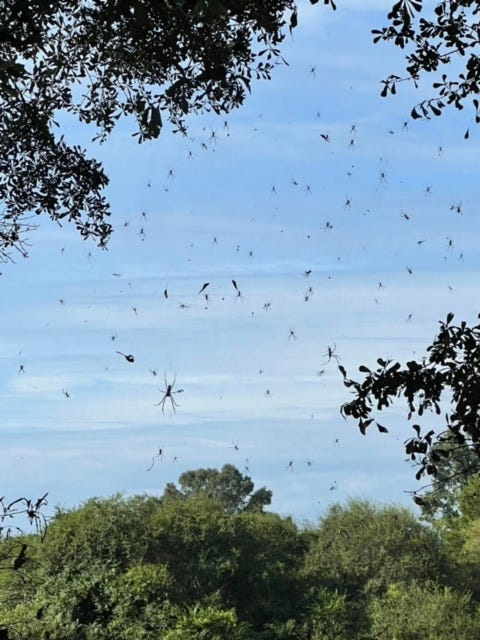
There’s a reason the main decoration for Halloween consists of spider webs – it suddenly seems as if spiders are everywhere. Why is that?
Why are there so many spiders in the fall?
Spiders don’t suddenly show up in the fall. They’ve actually been here all along after hatching in the spring from an egg sac laid the previous fall (we found one of these in my yard last spring, a just-hatched blob of minute spiderlings huddled together; you can see a video of that here).
Back in July, our Joros were tiny and not easy to notice among the weeds:
As they grew over the summer, I noticed many of their webs were not the typical golden color and not nearly as strong as the enormous threads you could bounce a penny on when fall arrived. I started to worry – were the Joros mating with our native spiders and creating a parallel mutant race of spiders?
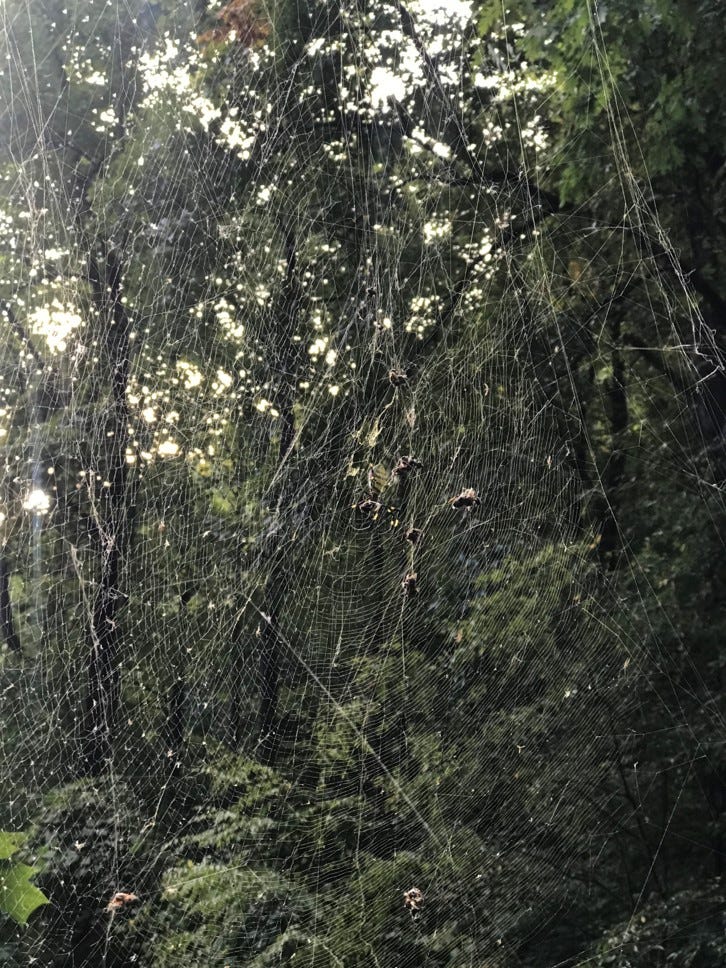
Fortunately, that’s not the case. It turns out that only fully mature Joros build strong, golden webs. When they’re younger and tiny, their webs are smaller, white, and less noticeable. That’s probably why I kept encountering people this summer who were hopeful that last winter’s extremely low temperatures had killed off the Joros. No such luck – they were just hiding and growing, eating stink bugs and biding their time until their coming-out party in the fall.

Interestingly, as spiders become “elderly,” their webs become more disorganized and erratic, which scientists believe indicates a deterioration of their central nervous system. It may inform our understandings of how humans’ nervous systems respond to age, though “old” for a spider is just a few hundred days.
Orb weavers such as writing spiders, garden spiders, and Joros, die off each winter. We’ve noticed that our writing spiders disappeared several weeks ago, but the Joros are just now reaching mature status. They’ll stick around far into October and November before dying off. Joro spiders’ high metabolism and heartrate mean they’re able to tolerate colder weather and thus last later into the fall than other spiders, like the writing spider. This may also mean they will spread north with ease. Their native range in Japan encompasses the same latitudinal range as the continental U.S.
I also learned Joros are just as prolific in their native Japan – as a matter of fact, the Grand Prix held at the Suzuka circuit in Japan this past weekend was covered up with the spiders. Journalists have to navigate a narrow path called Spider Alley if they want to make it to the infield. Disappointingly, none of them chose to publish pictures of this but instead simply took pictures of the race.
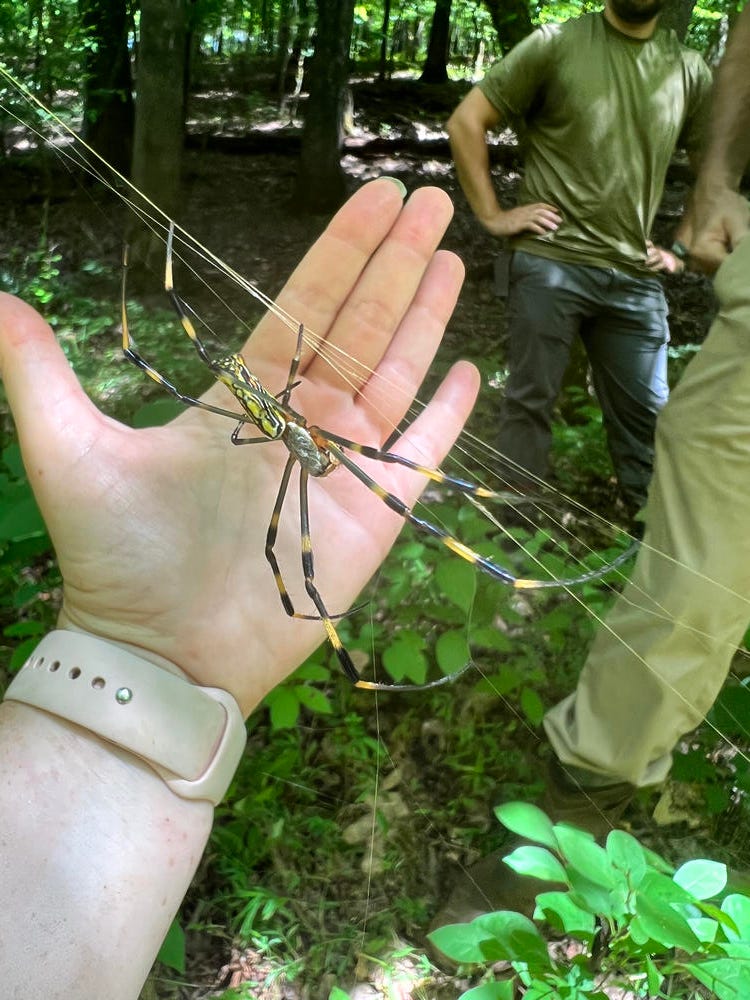
So, spiders seem to be taking over right now because they’ve finally grown big enough to be noticeable, and bigger spiders build bigger webs. We had just as many spiders in the spring and summer, but they did a better job of hiding themselves back then.
It’s also their mating season right now, which means they’re trying to be noticeable in order to find a partner in time to leave progeny for next year. Generally, the females stay in their webs while the males travel around looking for a mate. It’s why you might see more spiders crawling about right now – those are the males, so busy looking for a companion that they no longer eat. Their lives at this point are short but sweet.
What about you? Are you covered up in spiders right now? Do you love them, hate them, or peacefully co-exist with them?
Weird Nature:
Electric blue tarantula species discovered in Thailand:


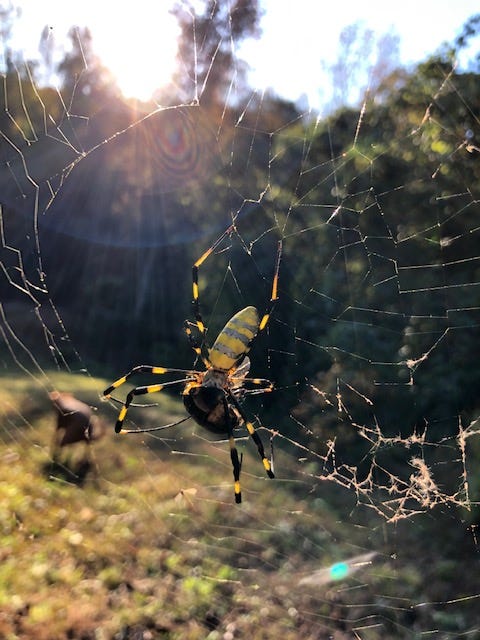
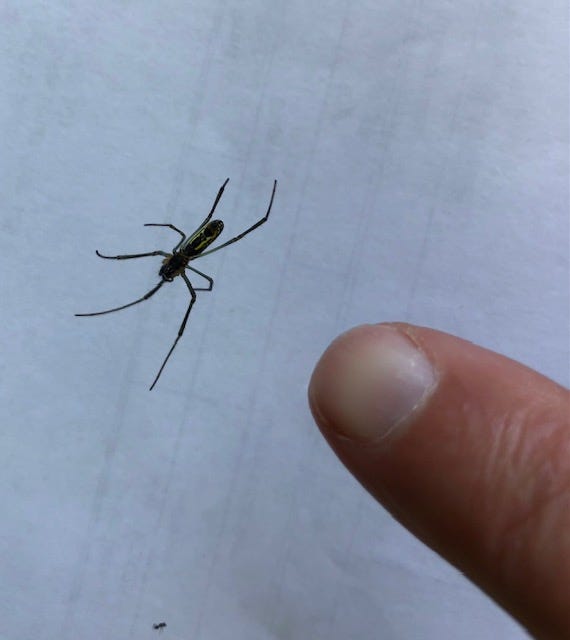

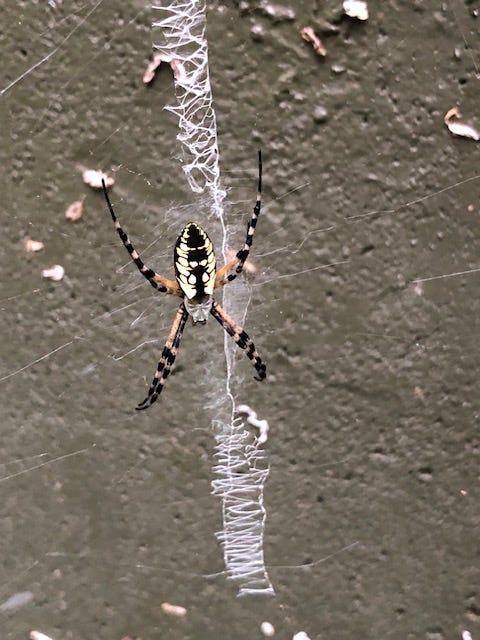
Loved the web catcher on the front of the bike, very clever. I'm not sure how seasonal spiders are in New Zealand, because I don't know that I've noticed certain times of year being particularly spidery. Since our winters are milder, they may not all die off.
Yes, they all start coming into the house in autumn. Since we practice ahimsa, we never kill any of them..just trap and escort them back outside!